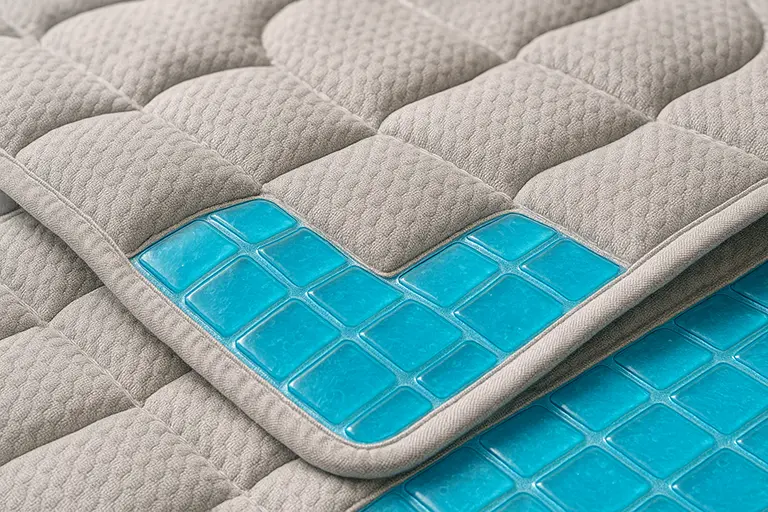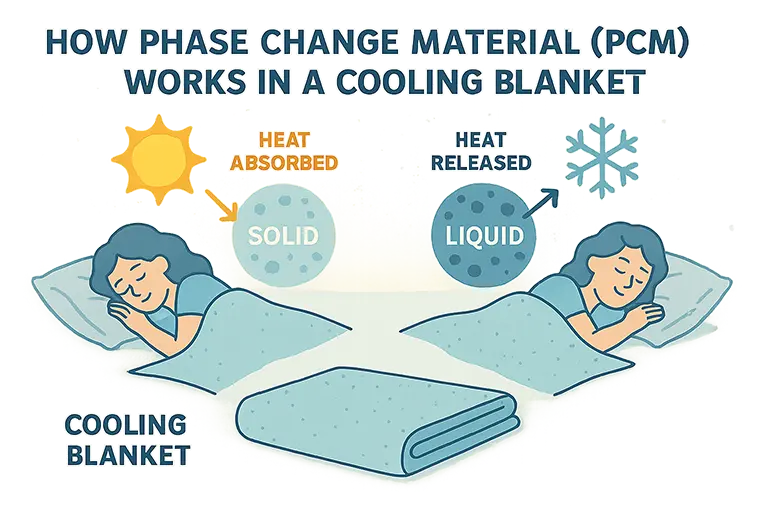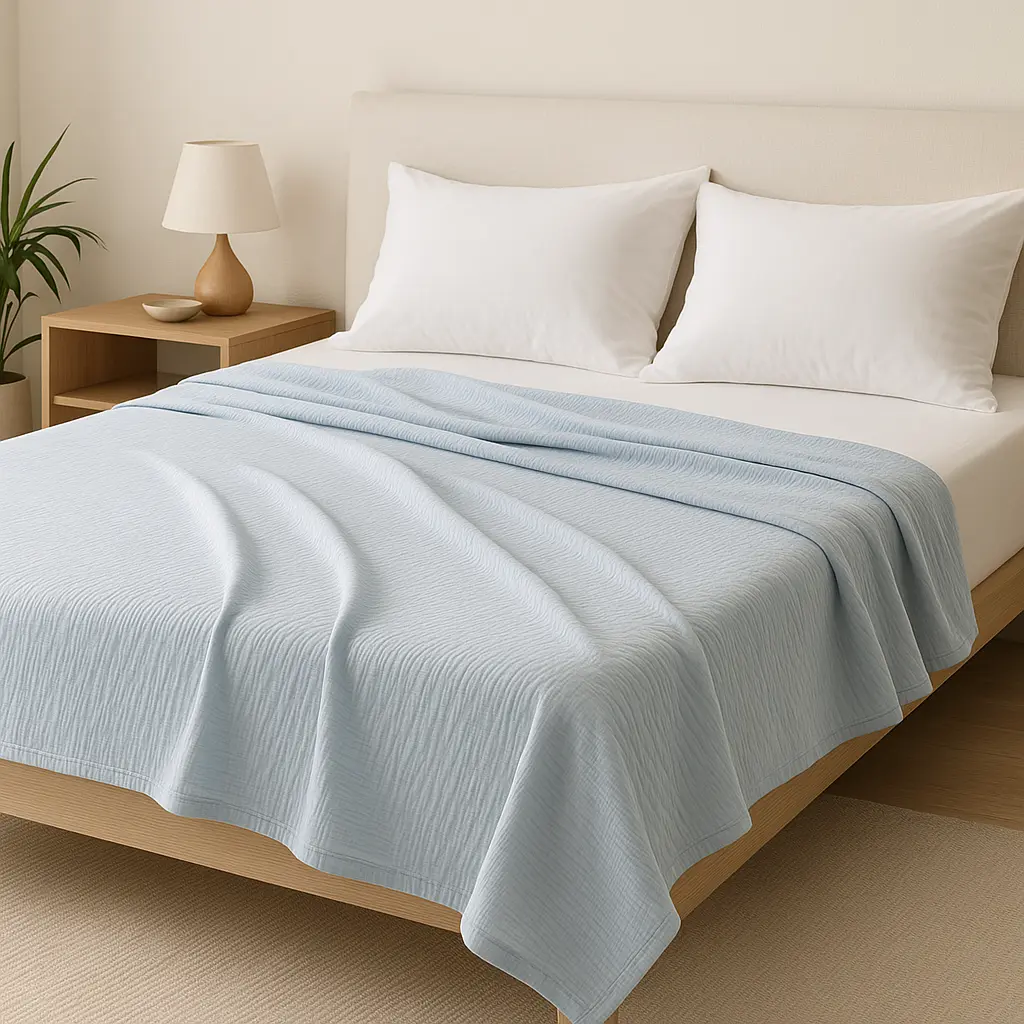When the heat is on, a cooling blanket can be a game-changer for those restless nights spent tossing and turning. Whether you’re a hot sleeper, living in a warm climate, or just looking for a more comfortable way to sleep through the summer, cooling blankets are designed to help regulate body temperature and provide a restful night’s sleep. But how do they work, exactly?
In this blog post, we’ll break down the science behind cooling blankets, their materials, and how they help you stay cool throughout the night.
1. What Is a Cooling Blanket?
A cooling blanket is designed to keep you cool and comfortable by absorbing heat from your body. Unlike regular blankets that trap warmth, cooling blankets are made from specialized materials that actively regulate temperature. They work by drawing heat away from your body and releasing it into the surrounding environment, keeping you at a comfortable temperature all night long.
Cooling blankets are often made with innovative fabrics and technologies like phase change materials (PCMs), moisture-wicking fibers, or breathable fabrics that enhance airflow.
2. How Do Cooling Blankets Work?
🌡️ Phase Change Materials (PCMs)
One of the most effective technologies used in cooling blankets is phase change materials (PCMs). These materials are designed to absorb, store, and release heat as they shift between solid and liquid states. When you get too hot, the PCMs in the blanket absorb excess heat and convert it into a liquid form, which keeps your body temperature in check. As your body cools down, the PCM solidifies and releases the stored heat, helping maintain a consistent and comfortable temperature.
💧 Moisture-Wicking Fabrics
Another common feature in cooling blankets is moisture-wicking fabrics. These materials draw moisture away from your skin and allow it to evaporate, helping to cool you down naturally. When you sweat, these fabrics pull the moisture into the blanket, where it evaporates and leaves you feeling cooler and more comfortable. Fabrics like bamboo, TENCEL™, and microfiber are popular for their moisture-wicking properties, making them ideal for hot sleepers.
🌬️ Breathable and Lightweight Materials
Breathability is key to cooling. Cooling blankets are often made with lightweight, breathable materials that promote airflow. Fabrics like cotton, linen, and bamboo allow air to circulate freely, preventing the build-up of heat and keeping you cool throughout the night. These materials are also naturally hypoallergenic, making them great for sensitive skin.

3. Benefits of Using a Cooling Blanket
- Improved Sleep Quality: Cooling blankets regulate your body temperature, which can help you fall asleep faster and stay asleep longer.
- Enhanced Comfort: By preventing overheating and night sweats, cooling blankets help create a comfortable and relaxing sleep environment.
- Prevents Discomfort: Perfect for hot sleepers, those living in warm climates, or anyone suffering from night sweats, cooling blankets provide immediate relief.
- Energy-Saving: Using a cooling blanket can reduce the need for air conditioning or fans, saving energy during the hot months.
4. Types of Cooling Blankets
❄️ Gel-Infused Cooling Blankets
Gel-infused blankets are designed with a special cooling gel that absorbs heat and provides a cold sensation. These blankets are often heavier and provide a comforting weight while keeping you cool.
🪶 Bamboo Cooling Blankets
Bamboo is naturally breathable, moisture-wicking, and has a cooling effect when in contact with the skin. Bamboo cooling blankets are soft, lightweight, and ideal for those who need a more natural fabric option.
🌱 TENCEL™ Cooling Blankets
TENCEL™ is an eco-friendly fabric made from eucalyptus wood pulp. It’s naturally cool to the touch and absorbs moisture quickly, making it a great choice for those looking to sleep comfortably through hot nights.
🧊 Phase Change Material (PCM) Blankets
As mentioned earlier, PCM blankets are perfect for maintaining consistent body temperature. These blankets are often designed with the latest technology for those who suffer from temperature fluctuations during sleep.
5. How to Care for Your Cooling Blanket
To ensure your cooling blanket remains effective, proper care is essential:
- Wash with cold water and a mild detergent to preserve the cooling properties.
- Avoid using fabric softeners as they can damage the moisture-wicking properties.
- Air dry or tumble dry on low heat to prevent shrinkage or damage to the cooling material.
- Follow the manufacturer’s care instructions for specific recommendations.

6. Final Thoughts: Stay Cool and Sleep Well
A cooling blanket is an excellent investment for anyone looking to improve their sleep quality. Whether you’re a hot sleeper, live in a warm climate, or simply want a more comfortable night’s sleep, cooling blankets offer a breathable, temperature-regulating solution.
With the right materials—like phase change materials, moisture-wicking fabrics, and breathable weaves—cooling blankets help you stay cool and dry, ensuring you get the restful, uninterrupted sleep you deserve.


Leave a Reply